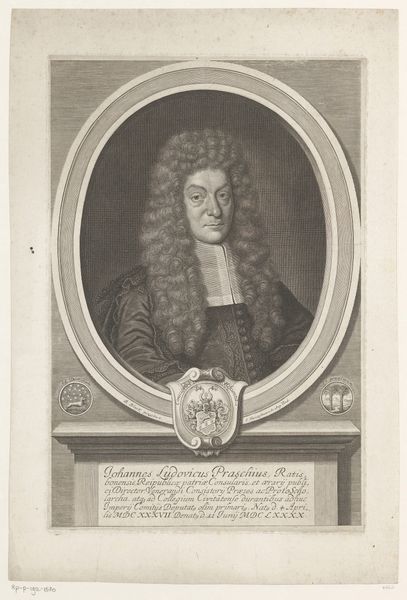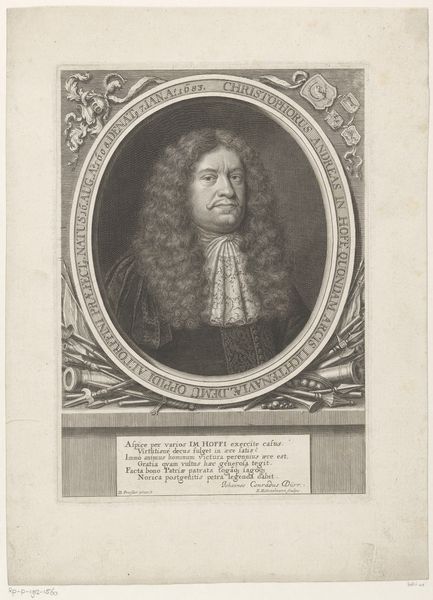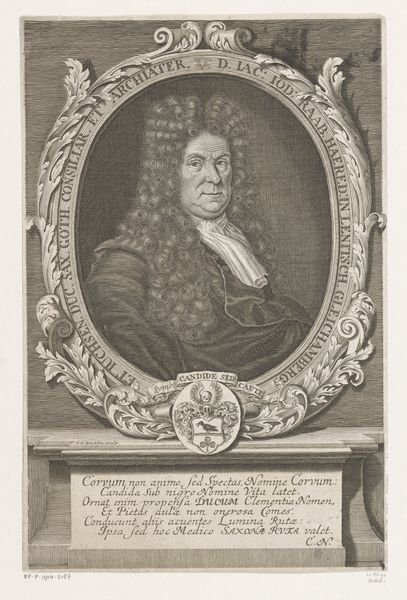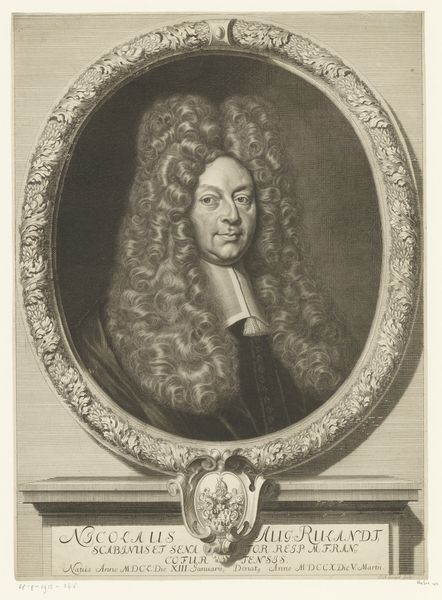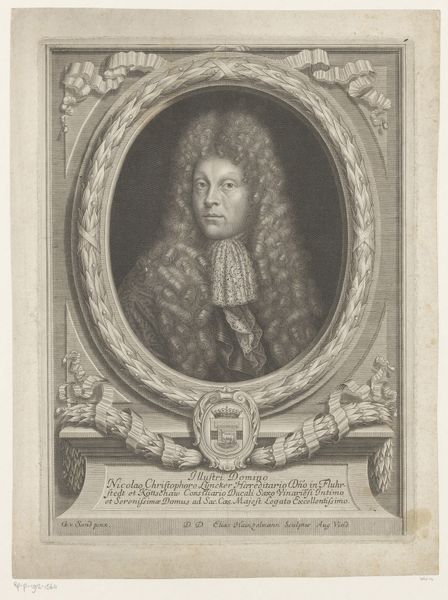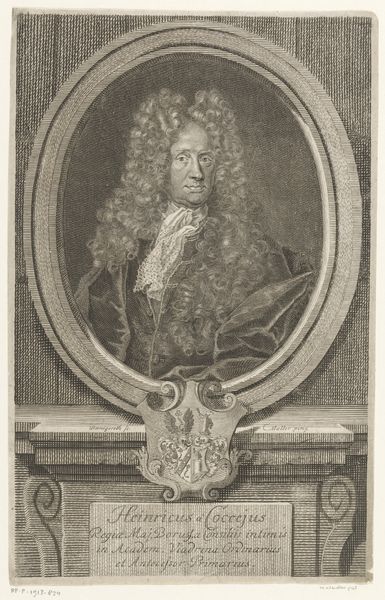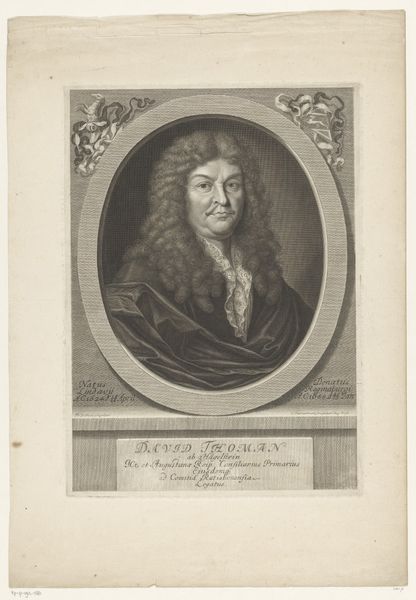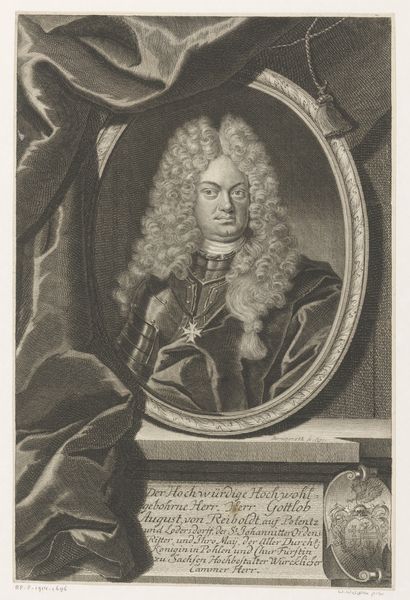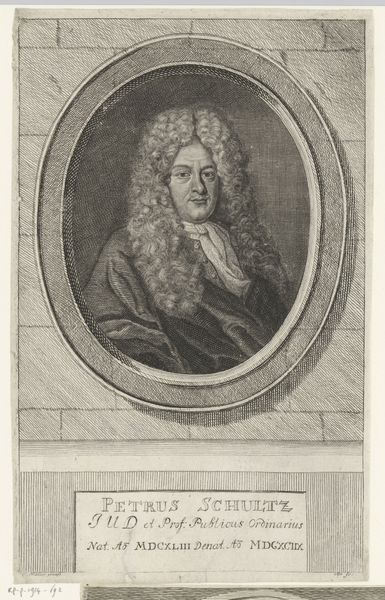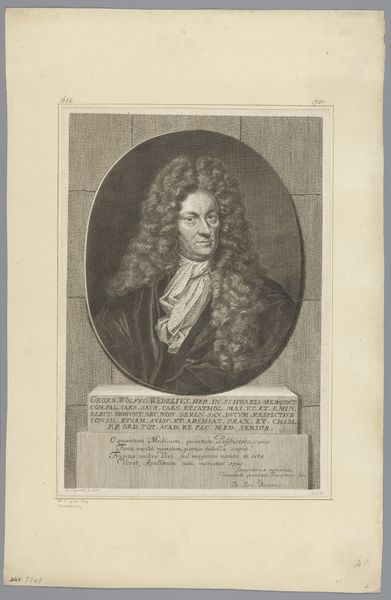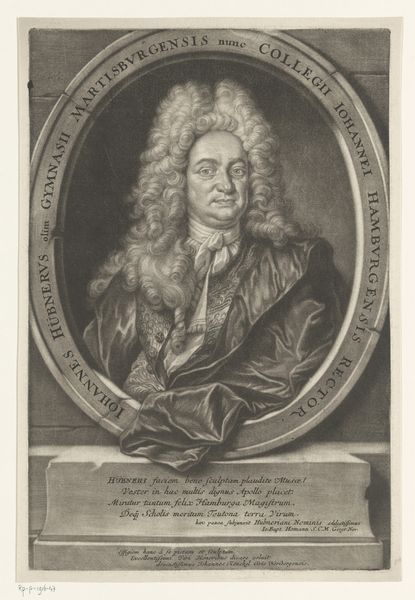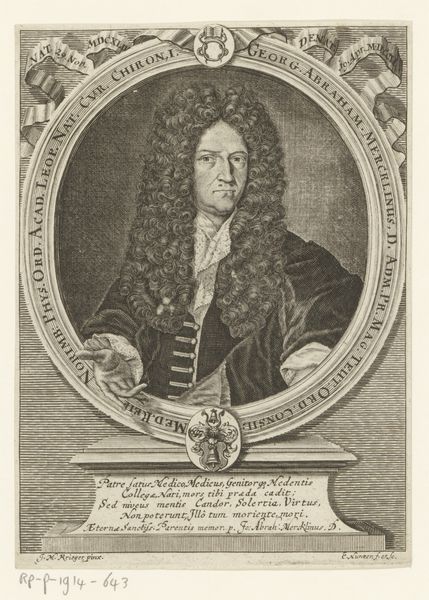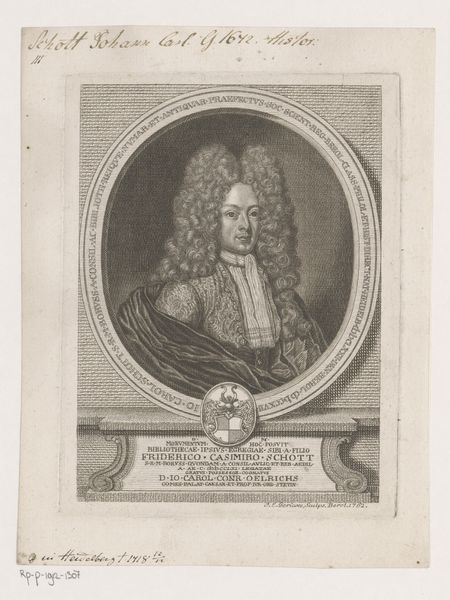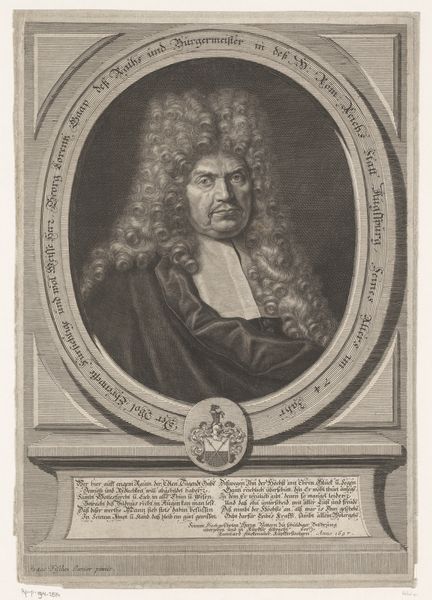
graphic-art, print, engraving
#
portrait
#
graphic-art
#
baroque
# print
#
old engraving style
#
line
#
history-painting
#
engraving
Dimensions: height 310 mm, width 200 mm
Copyright: Rijks Museum: Open Domain
Curator: This is a Baroque engraving depicting Huldrich von Eyben. It likely dates between 1682 and 1717, and it's currently held in the Rijksmuseum collection. Editor: My first impression? Wig. Definitely the wig. It practically explodes from the oval frame. I'm immediately thinking about the labour involved, not just in the sitter's display, but in the craftsmanship of the piece itself, the artisan behind the printing process, and who would’ve commissioned and purchased this portrait. Curator: It's true, the wig is… a statement. But think about what it signifies – power, status, adherence to the social rituals of the period. These portraits were incredibly important for projecting an image of authority and continuity. It reminds me of a mask that hides more than it reveals. The symmetry, too, in this engraving. Consider the careful positioning of his face within the oval. What stories were being communicated to the noble circles of the time? Editor: I can see how the very fine line work emphasizes social position. The engraving technique is precise. However, its success or failure probably relied more on the paper available at the time and the craftsman’s skillful hand, don’t you think? What paper stock was being used then, and did it degrade quickly? How many impressions could you get from a plate like this? All that plays a role in how the symbolism of the portrait would’ve been received and understood. It has as much to do with the material as with the status of the portrayed man. Curator: An excellent point. The lifespan of the image, its dissemination, certainly affected how it was read and reused. Engravings allowed for wider distribution and consumption, democratizing the image in a way, even if the subject remained an elite figure. Still, looking into von Eyben's eyes here… it hints to a complex innerity, irrespective of wig or socioeconomic context. It's almost melancholic. Editor: The melancholy might just be the nature of printmaking. It renders everything in these stark monochrome shades, emphasizing the subject's wrinkles and conveying age, the relentless march of time… which circles back to the physicality of materials and their durability and our obsession with arresting that change. Ultimately, these physical artifacts speak to human labor, economy, the ephemeral… it’s pretty awesome. Curator: True. Every line, every shade contains its own narrative. We're witnessing a fleeting representation, held, thanks to careful application, across centuries. Editor: Definitely. Next time I see an extravagant wig, though, I'll be picturing the sheep whose wool became the clothes, and maybe the mill that made the paper.
Comments
No comments
Be the first to comment and join the conversation on the ultimate creative platform.
